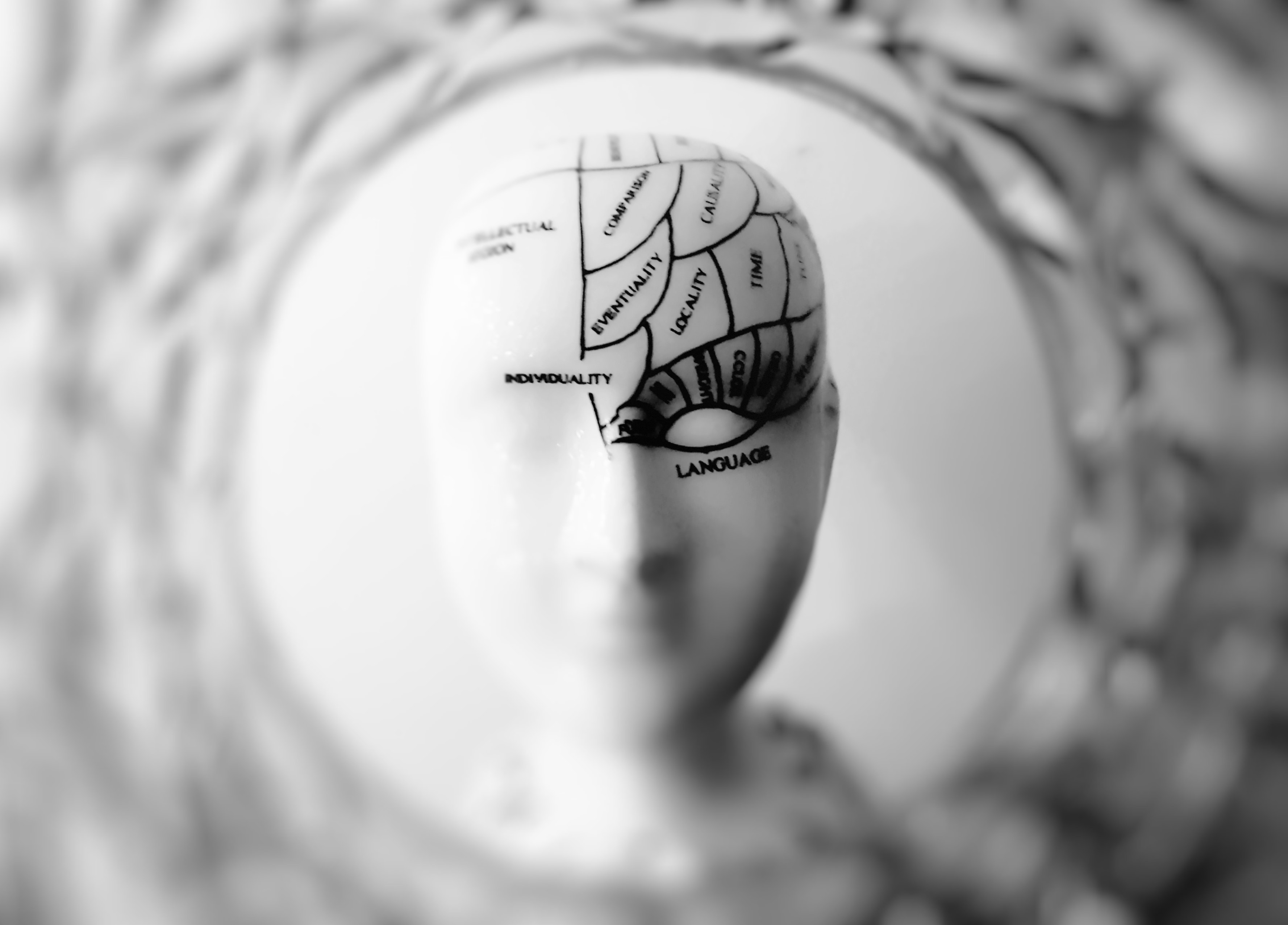- Teacher: Varun Sharma
- Teacher: Ms Nayanatara Tampi

Psychology and Human Factors
Objective(s) -
Gain an understanding of how human and social factors affect the relationship
between people and technologies, tools, environments, and systems.
Gain an understanding of the human behind the term “user,” including the
user’s memory and decision-making and problem-solving skills
Learn how cognition and perception, which encompass attention, memory,
thought, the “senses”, play a role in affecting the experience of design.
Understand how decisions are made using mental models and how emotion
and cognitive biases affect user experience.
Learn how to create effective designs as well as identify potential pitfalls in
your design, basing them on how the brain manages and prioritizes the sensory information it receives.
Understand how social context and environment influences human behavior.
Session No. | Topic & Sub-Topic | Duration (Hrs.) |
The human brain, subconscious mind, psychology of interaction design, cognitive frameworks | 5 | |
Cognition and perception, visual perception and color vision | 3 | |
Memory, types of memory | 3 | |
Thinking, action, learning, mental models, cognitive biases | 3 | |
Attention, choice, cognitive load. | 5 | |
Emotion and experience, peak experience, flow | 3 | |
Visceral, behavioral and reflective design | 5 | |
Feedback loops, social validation and virality | 3 | |
Total Hrs. | 30hrs. |
Prerequisite/s- Understanding of Design-related courses: While not a strict prerequisite, taking courses in design or related fields like graphic design, industrial design, or human-computer interaction can be advantageous. These courses can provide you with a foundational understanding of design principles, aesthetics, and user-centered design.
Mode of submission - Soft Copies
- Teacher: Mr Krishna Kumar

Aim(s) - The aim of learning information architecture as a module for design students is to equip them with the knowledge and skills necessary to create effective and user-centered information structures in various design contexts.
Objective(s) -
To understand the role of information architecture in design and its importance in organizing and structuring information for effective communication and user experience.
To develop user-centered design skills by conducting user research, understanding user needs, and incorporating usability principles into information architecture design.
To learn various techniques for organizing and classifying information, including hierarchical structures, faceted classification, metadata, and other methods that facilitate efficient information retrieval and navigation.
To apply fundamental design principles such as layout, typography, color, and composition to create visually appealing and readable information architectures.
To develop skills in content strategy and information design, including creating content hierarchies, meaningful taxonomies, and structuring content for different contexts and devices.
Detailed Syllabus
Session No. | Topic & Sub-Topic | Duration (hrs.) |
Information, data, complexity, uncertainty | 5 | |
Information systems, mapping information systems | 5 | |
Information processing, information ecology, principles of cognitive psychology, memory, cognitive load | 5 | |
Information Architecture, taxonomies and hierarchies of information | 10 | |
Grouping and classifying content, naming and labeling content, structures, information priority | 10 | |
5 different IA models - Hierarchical trees, Nested lists, Hub-and-Spoke, Bento Box, Filtered view, choosing and combining models | 10 | |
Navigation Design, primary, secondary, global and local navigation. | 5 | |
Building a sitemap for a website/app | 5 | |
Testing and validating IA | 5 | |
Total hrs. | 60 hrs. |
(Please add the number of rows as required to the Table above)
`Prerequisite/s-
Understanding of Design Principles: Familiarize yourself with fundamental design principles such as layout, typography, color theory, and composition. This knowledge will provide a solid basis for creating effective information structures.
Knowledge of User Experience (UX) Design: Gain an understanding of UX design principles, including user research, wireframing, prototyping, and usability testing. UX design is closely related to information architecture and helps ensure that the information structures you create are user-centered and intuitive.
Information Organization and Classification: Learn about different methods of organizing and classifying information, such as hierarchical structures, faceted classification, and metadata. Understanding these concepts will help you design effective information architectures that enable users to find and navigate information easily.
Content Strategy and Information Design: Explore the principles of content strategy and information design. This involves understanding how to structure and present information in a clear, coherent, and meaningful way.
User Research Techniques: Familiarize yourself with user research methods, such as interviews, surveys, and usability testing. User research helps you gain insights into user needs, behaviors, and preferences, which are crucial for designing information architectures that meet user requirements.
Data Visualization: Develop skills in data visualization to effectively present complex information in a visual and understandable format. This can involve learning about chart types, data storytelling, and information graphics.
Collaboration and Communication Skills: Information architecture often involves working with cross-functional teams and stakeholders. Enhance your collaboration and communication skills to effectively convey your ideas, understand user requirements, and work in a team environment.
Mode of submission : Soft Copies
- Teacher: Mr Krishna Kumar
Course Title: Digital Illustration
|
Programme |
B. Des |
|
Discipline |
GD & UX |
|
Academic Year |
2022-23 |
|
Specialization |
|
|
Batch |
2021 |
|
Year |
2023 |
|
Course Code |
DI |
|
Semester |
4 |
|
Type of Course |
Core |
|||
|
Course In-charge |
Nayanatara Tampi |
|||
|
Core Faculty |
Nayanatara Tampi |
|||
|
Co-Faculty |
|
|||
|
Visiting Faculty |
|
|||
|
|
L |
ST |
P |
Total |
|
Marks |
Internal Work |
External Jury |
External Task |
External Exam |
Total |
|
Credits |
|
|
|
4 |
Max. |
80 |
20 |
0 |
0 |
100 |
|
|
Hours |
|
|
|
60 |
Min. |
32 |
8 |
0 |
0 |
40 |
Aim(s) – Students to create illustrations digitally with characters, backgrounds, emotions and action – developing their own drawing style along the way.
Objective(s) –
· Starting with Line art and using Illustrator and Pen tablet to make digital illustrations
· Moving into Flat (2d) colour drawings, using illustrator shape building techniques
· Digital painting on Photoshop using brushes and pen tablet
· 3d semi realistic drawing, learning tone shadows and perspective grids
· Creating digital collages, tracing, and other useful drawing methods
Pedagogy
Students will explore digital illustration in depth on Adobe Illustrator and Photoshop. They will learn to develop characters, emotions, actions, environments and learn to create consistency throughout their design. They will learn a variety of drawing styles and how to choose between them. Eventually students will find their own personal style and apply this to create a story board of their work.
· Detailed Syllabus
|
Session No. |
Topic & Sub-Topic |
Duration (Hrs.) |
|
1. |
Introduction to basic line art drawing with pen tablet, tracing with shape tools and tracing with pen and curve tool on Illustrator |
2 |
|
2. |
Assignment on Line art drawing |
4 |
|
3. |
Introduction to flat (2d) colour art on illustrator, creating colour palettes, shades and using illustrations from previous exercise |
2 |
|
4. |
Assignment on 2d flat colour art |
4 |
|
5. |
Introduction to digital painting on photoshop, using pen tablet and brushes and patterns. |
2 |
|
6. |
Assignment on digital painting (Photobashing) |
4 |
|
7. |
Introduction to semi-realistic art, adding value to a drawing using tone, shadows and highlights. Introduction to 3d art, perspective drawing on illustrator. |
2 |
|
8. |
Assignment on semi realistic 3d art. |
4 |
|
9. |
Final Development of Character and Environment style |
6 |
|
10. |
Introduction to Illustration for graphic novels, gaming |
2 |
|
11. |
Brief and Storyline Development |
4 |
|
12. |
Lecture on Character Development styles – Emotions and Actions |
2 |
|
13. |
Lecture on Layouts and storytelling |
2 |
|
14. |
Time management and Planning |
2 |
|
15. |
Individual Review and Feedback |
12 |
|
16. |
Final Presentation |
6 |
|
17. |
Total Hrs. |
60 |
Mode of submission
· Hard Copies Pin up presentation and discussion
· Soft Copies for online submission and grading
|
Faculty |
Name |
Signature |
Date |
|
Course I/C |
Prof. Nayanatara Tampi |
|
|
|
Director |
Prof. Dr. Vijay Shah |
|
|
- Teacher: Varun Sharma
- Teacher: Ms Nayanatara Tampi
- Teacher: Varun Sharma
- Teacher: Varun Sharma
Course Title: Copywriting and Content Development
|
Programme |
B. Des |
|
Discipline |
GD & UX |
|
Academic Year |
2022-23 |
|
Specialization |
GD |
|
Batch |
2021 |
|
Year |
2023 |
|
Course Code |
DES402 |
|
Semester |
4 |
|
Type of Course |
Core |
|||
|
Course In-charge |
Nayanatara Tampi |
|||
|
Core Faculty |
Nayanatara Tampi |
|||
|
Co-Faculty |
- |
|||
|
Visiting Faculty |
Aziz Poonawala, Manav Kambli |
|||
|
|
L |
ST |
P |
Total |
|
Marks |
Internal Work |
External Jury |
External Task |
External Exam |
Total |
|
Credits |
|
|
|
4 |
Max. |
80 |
20 |
0 |
0 |
100 |
|
|
Hours |
16 |
28 |
10 |
54 |
Min. |
32 |
8 |
0 |
0 |
40 |
Aim(s) – Introduction to Copywriting and Content Creation
· Objective(s) –
1. Sensitizing to successful and unsuccessful advertising campaigns
2. Learn and apply the use of attractive headlines and taglines
3. Discover the use of Brand voice and tonality
4. Learn the various tools of copy writing and when to use each
5. Create an advertising pitch using above tools and review
Pedagogy
Students will gain multi-disciplinary skills through lectures and interaction with industry experts while developing their own ad campaigns for specific product briefs. They will learn to discuss, criticize, and appreciate other forms of advertising
· Detailed Syllabus
|
Session No. |
Topic & Sub-Topic |
Duration (Hrs.) |
|
1. |
Introduction to advertising, lecture |
2 |
|
2. |
Assignment on Headlines and Taglines |
4 |
|
3. |
Introduction to market research for branding |
2 |
|
4. |
Assignment on research report for selected brand |
4 |
|
5. |
Introduction to brand tonality and brand archetypes |
3 |
|
6. |
Introduction to tools of Copywriting and Case studies presentation |
3 |
|
7. |
Assignment on brand tonality and market repositioning |
6 |
|
8. |
Presentation of students work and Jury |
4 |
|
9. |
Introduction to types of writing for content creation |
2 |
|
10. |
Assignment on ideation for content creation |
4 |
|
11. |
Introduction to Organic content and successful blog writing |
2 |
|
12. |
Assignment on Blog post for organic brand content |
6 |
|
13. |
Introduction to Social media platforms and brand content |
2 |
|
14. |
Assignment on Social media posts for brands |
4 |
|
15. |
Final presentation and jury for module |
6 |
|
|
Total Hrs. |
54 |
(1 working day was missed due to Founder’s Day program at DYPIU)
· Prerequisite/s- Understanding of what is
Advertising and relevant young Indian brands
· Mode of submission Hard Copies & Soft Copies
Final assignments are to be submitted in digital format online.
|
Faculty |
Name |
Signature |
Date |
|
Course I/C |
Prof. Nayanatara Tampi |
|
|
|
Director |
Prof. Dr. Vijay Shah |
|
|
- Teacher: Varun Sharma
- Teacher: Ms Nayanatara Tampi

Course: Design Thinking II
Aim: Introduce participants to Design Thinking principles and foster creative problem-solving skills.
Objectives:
- Define and empathize with users' needs.
- Generate innovative ideas through ideation techniques.
- Prototype and iterate solutions effectively.
- Collaborate in interdisciplinary teams.
- Apply Design Thinking in real-world scenarios.
Session No. | Topic & Sub-Topic | Duration (Hrs.) |
The human brain, subconscious mind, psychology of interaction design, cognitive frameworks | 5 | |
Cognition and perception, visual perception and color vision | 3 | |
Memory, types of memory | 3 | |
Thinking , action, learning, mental models, cognitive biases | 3 | |
Attention, choice, cognitive load | 5 | |
Emotion and experience, peak experience, flow | 3 | |
Visceral, behavioral and reflective design | 5 | |
Feedback loops, social validation and virality | 3 | |
Total Hrs. | 30hrs. |
`Prerequisite/s - Understanding of Design-related courses: While not a strict prerequisite, taking courses in design or related fields like graphic design, industrial design, or human-computer interaction can be advantageous. These courses can provide you with a foundational understanding of design principles, aesthetics, and user-centered design.
Mode of submission - Soft Copies
- Teacher: Mr Krishna Kumar
